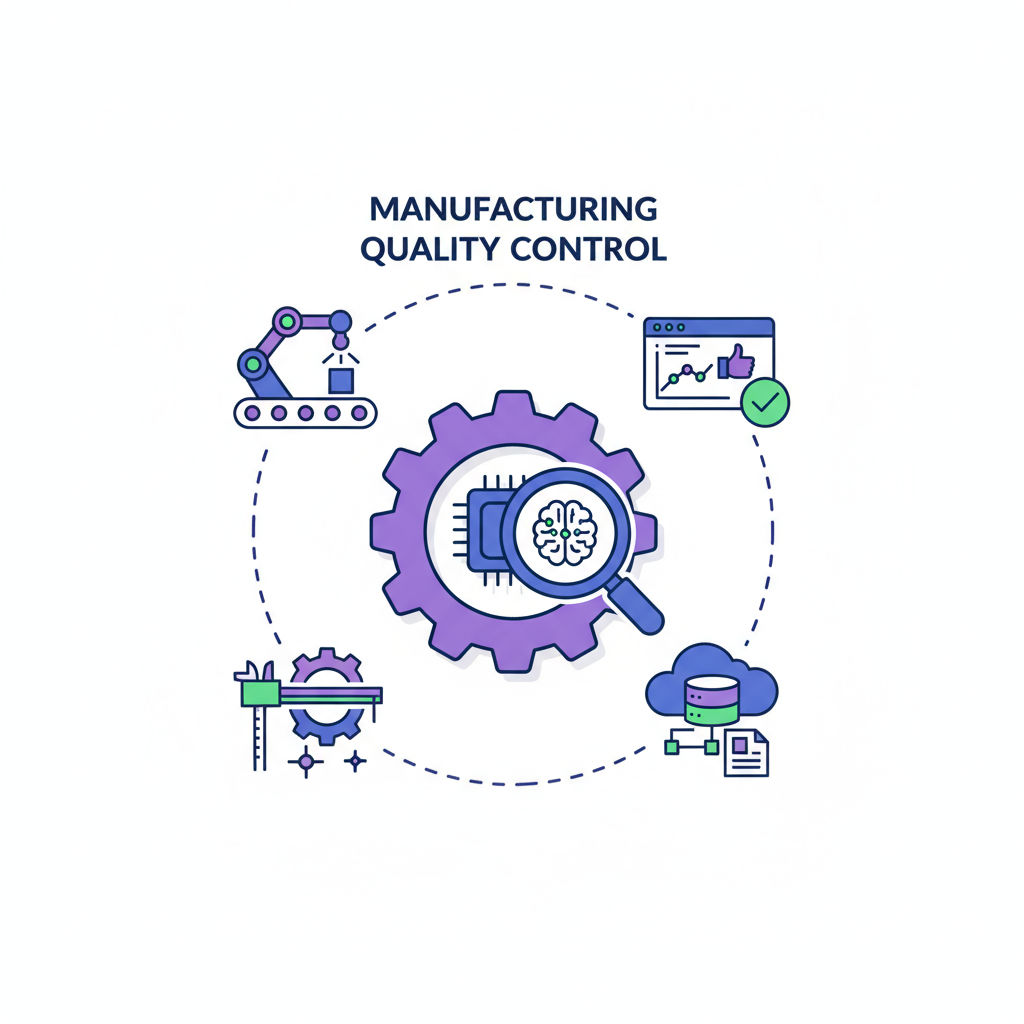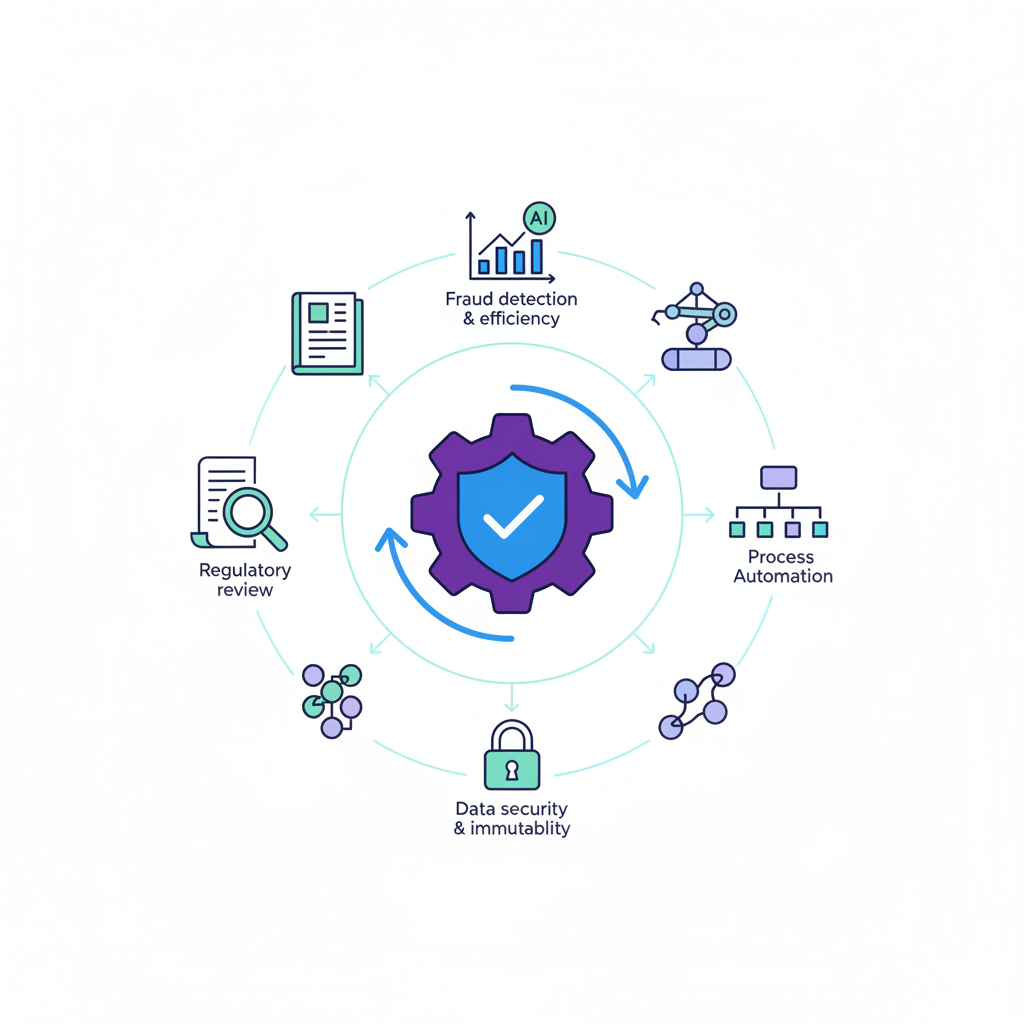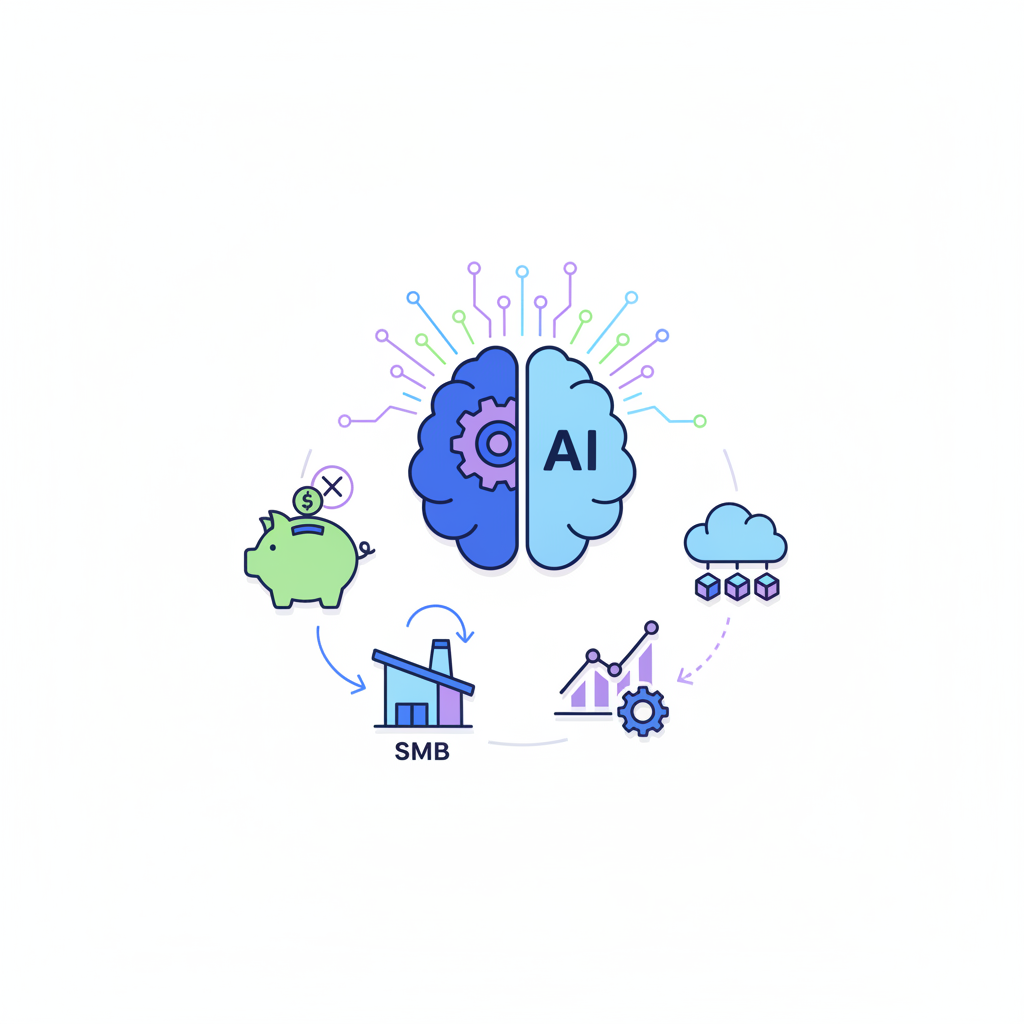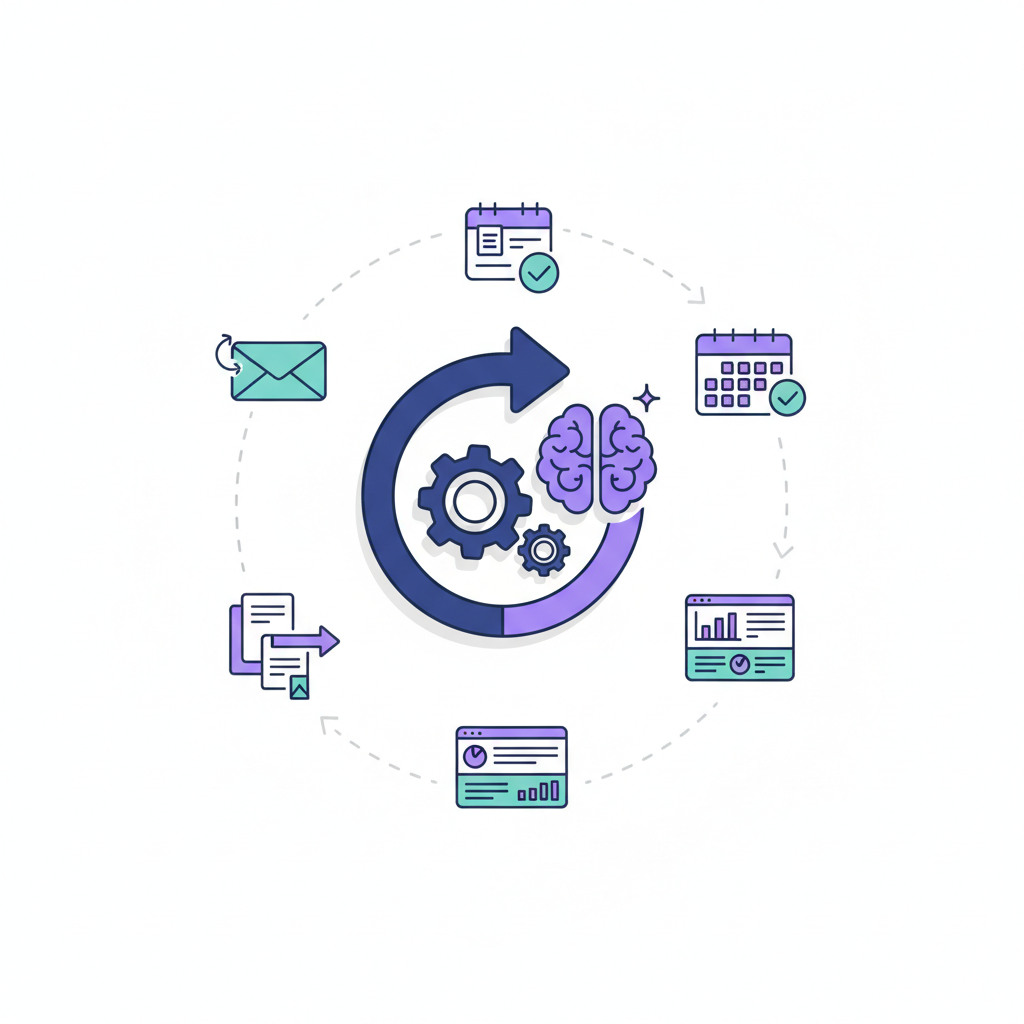Top 10 AI Tools for Manufacturing Quality Control
Discover the top 10 AI tools for manufacturing quality control in 2025, including Cognex VisionPro, Siemens Mendix, IBM Maximo, Google Cloud Vision AI, AWS Panorama, Bright Machines, Tulip, Sight Machine, NVIDIA Metropolis, and PTC ThingWorx. Learn how AI enhances accuracy, efficiency, and predictive maintenance.

Revolutionizing the Shopfloor: The Power of AI in Manufacturing Quality Control
The modern manufacturing industry faces unprecedented challenges, from increasingly complex product designs and stringent quality standards to global supply chain pressures and the relentless demand for faster production cycles. Traditional quality control methods, often reliant on manual inspection and statistical sampling, struggle to keep pace with the speed, accuracy, and scale required today. These conventional approaches are prone to human error, can be time-consuming, and often detect defects reactively, leading to costly rework and scrap.
Enter artificial intelligence (AI), a transformative force poised to redefine precision and efficiency in quality control. AI in manufacturing is no longer a futuristic concept but a present-day imperative, offering solutions that move beyond mere detection to proactive prevention. By leveraging advanced algorithms and machine learning, AI tools for manufacturing quality control are empowering manufacturers to achieve higher product quality, reduce operational costs, and enhance overall productivity.
This comprehensive guide will delve into the world of AI in manufacturing quality control. We'll explore what AI-powered QC entails, the immense benefits it brings, and then unveil a curated list of the top 10 AI tools currently revolutionizing the shopfloor. We’ll also discuss crucial selection criteria, potential challenges, and emerging trends shaping the future of AI in manufacturing. Prepare to discover how AI can elevate your manufacturing activities to new heights of excellence.
Understanding AI in Manufacturing Quality Control: A Foundation
AI-powered quality control represents a significant paradigm shift, moving beyond reactive inspection to proactive, intelligent quality assurance. It's about embedding smart capabilities directly into the manufacturing process, allowing for continuous monitoring, immediate feedback, and predictive insights. This transformation ensures that quality is not just checked at the end, but built in from the start.
At its core, AI in manufacturing quality control leverages several key technologies. Computer Vision is paramount for visual inspection, enabling cameras and sensors to "see" and analyze products for defects, anomalies, or deviations from specifications with superhuman speed and consistency. Machine Learning (ML) algorithms are trained on vast datasets of good and bad products, learning to identify patterns indicative of defects, predict potential failures, and optimize process parameters. Deep Learning (DL), a subset of ML, utilizes neural networks to handle even more complex anomaly detection, especially in unstructured data like images and sensor readings, allowing for highly nuanced defect classification. Finally, Predictive Analytics uses historical and real-time data to forecast future outcomes, such as equipment failure or potential quality issues, enabling manufacturers to intervene before problems escalate.
These technologies collectively transform traditional QC processes. In visual inspection, AI automates the detection of surface flaws, missing components, or incorrect assembly. For real-time defect prediction, AI monitors machine parameters and environmental conditions, flagging deviations that could lead to quality issues. Process optimization benefits from AI by identifying inefficiencies and suggesting adjustments to improve yield and consistency. Furthermore, automated data analysis by AI tools for manufacturing quality control provides actionable insights, turning raw data into intelligence that drives continuous improvement across all manufacturing activities.
The Unrivaled Benefits of Integrating AI into Manufacturing Quality Control
Integrating AI into manufacturing quality control offers a multitude of advantages that significantly impact a company's bottom line and competitive edge. These benefits extend across various facets of the manufacturing industry, driving a new era of operational excellence.
Firstly, AI delivers enhanced accuracy and consistency. Unlike human inspectors who can suffer from fatigue or subjective judgment, AI systems perform repetitive tasks with unwavering precision, minimizing human error and ensuring uniform quality standards across every single product. This leads to a dramatic reduction in false positives and negatives, improving the reliability of quality assessments.
Secondly, there's a substantial increase in efficiency and speed. AI automates tedious and time-consuming inspection tasks, freeing up human operators for more complex problem-solving and strategic roles. Real-time monitoring capabilities mean defects are identified instantaneously, preventing them from propagating further down the production line and enabling faster throughput. This boost in operational efficiency is critical for meeting tight production schedules.
Thirdly, AI integration leads to significant cost reduction. By identifying defects earlier and with greater accuracy, manufacturers can drastically lower rework rates, reduce scrap material, and minimize costly warranty claims. The proactive nature of AI also contributes to lower operational expenses by optimizing resource utilization and preventing catastrophic failures.
Moreover, AI provides powerful proactive and predictive capabilities. It shifts the focus from reactive fixes to predictive maintenance and early defect identification. AI algorithms can analyze sensor data and process parameters to predict when a machine might malfunction or when a batch is likely to produce defects, allowing for timely interventions. This foresight is invaluable for maintaining consistent quality.
Finally, AI enables data-driven insights. By continuously collecting and analyzing vast datasets from the shopfloor, AI tools for manufacturing quality control uncover hidden patterns and correlations that human analysis might miss. These insights are crucial for continuous improvement initiatives, allowing manufacturers to optimize key performance indicators (KPIs), refine processes, and make informed decisions that enhance overall product quality and operational efficiency. The ability of AI for operational efficiency manufacturing is truly transformative.
Top 10 AI Tools Revolutionizing Manufacturing Quality Control
The selection of the following AI tools for manufacturing quality control is based on their proven capabilities in leveraging artificial intelligence, machine learning, and computer vision to enhance accuracy, efficiency, and predictive power in various manufacturing activities. We considered their versatility, integration potential, and impact on real-world quality challenges across the manufacturing industry. These AI tools for manufacturing represent the cutting edge of manufacturing AI, offering diverse solutions for everything from visual inspection to process optimization and predictive quality.
1. Cognex VisionPro
Cognex VisionPro is a powerful, PC-based vision software that provides a comprehensive library of advanced vision tools for a wide range of industrial applications, including sophisticated defect detection. It leverages advanced computer vision algorithms, making it a cornerstone for automated visual inspection tasks.
Key Features: VisionPro offers patented pattern matching, blob analysis, caliper, and image filtering tools. It supports 2D and 3D vision, deep learning-based defect detection, and optical character recognition (OCR). Its flexible programming environment allows for custom application development.
Specific QC Application: Primarily used for high-speed, high-accuracy visual inspection of products for surface defects, assembly verification, dimensional gauging, and presence/absence checks. It excels at identifying subtle flaws that human eyes might miss.
Primary Benefit: Manufacturers gain unparalleled accuracy and speed in automated visual inspection, drastically reducing manual inspection labor and improving overall product quality consistency.
2. Siemens Mendix for Quality
Siemens Mendix is a low-code application development platform that empowers manufacturers to build custom enterprise-grade applications, including those tailored for quality management, with speed and agility. While not an AI tool itself, it enables the rapid creation of AI-powered quality control applications.
Key Features: Drag-and-drop interface, reusable components, cloud-native architecture, and seamless integration with existing systems (ERP, MES). It supports the incorporation of AI/ML models for specific quality functions.
Specific QC Application: Manufacturers can develop bespoke apps for real-time defect reporting, digital work instructions with integrated quality checks, supplier quality management, and non-conformance tracking, often embedding AI models for predictive analysis or automated data capture.
Primary Benefit: Accelerates digital transformation in quality control by allowing manufacturers to quickly deploy customized, AI-enhanced solutions that address unique operational challenges without extensive coding expertise.
3. IBM Maximo Application Suite
IBM Maximo Application Suite is an integrated platform that uses AI, IoT, and analytics to optimize asset performance, extend asset lifecycles, and improve operational efficiency. Its capabilities extend to predictive quality by monitoring asset health and predicting potential impacts on product quality.
Key Features: AI-powered predictive maintenance, remote monitoring, asset management, and prescriptive actions. It integrates with various data sources, including sensors and operational systems, to provide a holistic view of asset health and its correlation with quality.
Specific QC Application: By monitoring the condition of manufacturing equipment, Maximo can predict when a machine might deviate from optimal performance, potentially causing defects. This enables proactive maintenance, preventing quality issues before they arise.
Primary Benefit: Provides AI-powered asset performance management that directly contributes to predictive quality, ensuring equipment reliability and minimizing quality excursions caused by machine degradation.
4. Google Cloud Vision AI
Google Cloud Vision AI is a powerful, pre-trained machine learning model that allows developers to understand the content of images. It offers robust APIs for image analysis, making it a highly scalable and flexible option for custom quality control solutions.
Key Features: Object detection, optical character recognition (OCR), explicit content detection, and custom model training. It can identify a vast array of objects, faces, and text within images, and users can train custom models for specific defect types.
Specific QC Application: Manufacturers can leverage Vision AI to build custom visual inspection systems for identifying specific product defects, verifying labels, or ensuring correct component placement. Its scalability makes it suitable for high-volume production lines.
Primary Benefit: Offers a highly scalable and accessible AI vision API, enabling manufacturers to quickly deploy custom, cloud-based visual quality control solutions without needing deep AI expertise.
5. AWS Panorama
AWS Panorama is an edge AI device and SDK that brings computer vision to on-premises industrial cameras. It allows manufacturers to deploy AI models at the edge, enabling real-time visual inspection and analysis without sending all video streams to the cloud.
Key Features: Edge computing for low-latency processing, pre-built computer vision models, integration with existing industrial cameras, and a robust SDK for custom application development. It processes video feeds locally, reducing bandwidth requirements.
Specific QC Application: Ideal for real-time visual inspection on the shopfloor, such as detecting anomalies on fast-moving conveyor belts, monitoring worker safety protocols, or verifying product assembly in environments where internet connectivity might be limited or latency is critical.
Primary Benefit: Enables real-time, low-latency AI-powered visual inspection directly at the edge, enhancing operational efficiency and defect detection in challenging industrial environments.
6. Bright Machines Microfactory
Bright Machines offers a full-stack solution for intelligent automation, combining robotics, machine vision, and AI software to create flexible, automated microfactories. Their integrated approach includes automated assembly and integrated quality inspection.
Key Features: Modular robotic cells, advanced machine vision for guidance and inspection, AI-powered software for process optimization, and rapid reconfigurability. It automates entire assembly sequences, including embedded quality checks.
Specific QC Application: The Microfactory integrates quality control directly into the automated assembly process. AI-driven vision systems inspect each component and assembly step in real-time, ensuring that only defect-free products proceed, and immediately flagging any anomalies.
Primary Benefit: Provides a holistic, AI-driven solution for automated manufacturing and quality control, enabling higher throughput, superior product quality, and greater flexibility in production.
7. Tulip Frontline Operations Platform
Tulip is a no-code platform that empowers engineers to build digital apps for frontline workers, integrating data from machines, sensors, and existing systems. It facilitates digital work instructions and real-time quality control data capture, often enhanced by AI.
Key Features: Intuitive app builder, connectivity to machines and IoT devices, real-time data collection and analytics, and integration with ERP/MES systems. It can incorporate AI models for predictive quality or anomaly detection based on collected data.
Specific QC Application: Manufacturers use Tulip to create interactive digital work instructions that guide operators through quality checks, collect real-time data on defects, and provide immediate feedback. AI can analyze this data to identify trends or predict potential quality issues.
Primary Benefit: Empowers frontline workers with digital tools for real-time quality data capture and guided inspections, improving consistency and providing valuable information for AI-driven quality improvements.
8. Sight Machine
Sight Machine is a manufacturing data platform that uses AI and machine learning to transform raw factory data into actionable insights for process and quality optimization. It connects to virtually any machine, sensor, or system on the shopfloor.
Key Features: Universal data connectivity, real-time data ingestion and contextualization, AI/ML-driven analytics, and dashboards for operational visibility. It creates a "digital twin" of the factory floor for comprehensive analysis.
Specific QC Application: By analyzing vast amounts of production data, Sight Machine's AI can identify root causes of quality issues, optimize machine parameters to reduce defects, and predict potential quality deviations before they occur, enhancing overall manufacturing AI capabilities.
Primary Benefit: Provides a unified data platform with AI-powered analytics to uncover hidden patterns in manufacturing data, leading to significant improvements in process efficiency and product quality.
9. NVIDIA Metropolis
NVIDIA Metropolis is an application framework, set of developer tools, and partner ecosystem that brings AI-powered vision to smart factories, cities, and retail. For manufacturing, it focuses on advanced defect detection and operational efficiency through AI vision.
Key Features: Optimized for NVIDIA GPUs, comprehensive SDKs for computer vision and deep learning, pre-trained models, and robust deployment tools for edge and cloud. It supports high-resolution, high-speed video analytics.
Specific QC Application: Manufacturers leverage Metropolis to develop and deploy highly sophisticated AI vision systems for advanced defect detection, such as identifying microscopic flaws, complex surface textures, or subtle assembly errors in high-volume production lines. It's particularly strong for applications requiring deep learning.
Primary Benefit: Offers a powerful, GPU-accelerated platform for developing and deploying cutting-edge AI vision applications, enabling superior accuracy and speed in complex defect detection tasks.
10. PTC ThingWorx Quality Management
PTC ThingWorx is an industrial IoT (IIoT) platform that enables manufacturers to connect, monitor, and manage their operational technology (OT) assets. Its quality management capabilities leverage IoT data and AI for predictive quality and data analytics.
Key Features: IoT connectivity, data aggregation and contextualization, real-time dashboards, and integration with enterprise systems. It allows for the development of custom applications that incorporate AI/ML models for predictive analytics.
Specific QC Application: ThingWorx collects data from machines, sensors, and production lines, which can then be analyzed by integrated AI models to predict potential quality issues, monitor process variations, and identify correlations between machine performance and product quality. This helps in building robust digital twins for quality.
Primary Benefit: Provides an IIoT platform that integrates operational data with AI to enable predictive quality, offering real-time insights and proactive management of manufacturing processes to maintain high standards.
Navigating the Landscape: Challenges and Considerations for AI Integration in QC
While the promise of AI in manufacturing quality control is immense, integrating these advanced technologies into existing manufacturing activities comes with its own set of challenges. Addressing these considerations proactively is crucial for successful implementation and maximizing the benefits of AI in manufacturing.
One of the primary hurdles is data quality and availability. AI models are only as good as the data they are trained on. Manufacturers often struggle with fragmented data sources, inconsistent data formats, and insufficient volumes of clean, labeled data, especially for rare defect types. Ensuring the collection of relevant, high-quality data is a foundational step that requires significant effort.
Another significant challenge is integration with legacy systems. Many manufacturing facilities operate with a mix of older machinery and modern equipment, often running on disparate software platforms. Seamlessly integrating new AI tools with existing ERP, MES, and SCADA systems can be complex, requiring custom interfaces and careful planning to avoid operational disruptions.
The skill gap and training within the workforce also pose a considerable challenge. Implementing and managing AI solutions requires new skill sets, including data science, machine learning engineering, and AI literacy among operators and maintenance staff. Manufacturers must invest in comprehensive training programs to equip their workforce with the necessary knowledge to interact with and leverage AI tools effectively.
The cost of implementation is another critical factor. Initial investments in hardware (e.g., high-resolution cameras, edge devices, powerful servers), software licenses, and specialized expertise can be substantial. While AI promises significant long-term ROI, the upfront capital expenditure can be a barrier for some organizations in the manufacturing industry.
Finally, ethical considerations and bias must be carefully managed. AI algorithms, if trained on biased data, can perpetuate or even amplify existing biases, leading to unfair or inaccurate decision-making. Ensuring fairness, transparency, and accountability in AI systems, particularly in critical quality control applications, is paramount to maintain trust and prevent unintended consequences.
Choosing the Right AI Quality Control Tool for Your Manufacturing Needs
Selecting the optimal AI quality control tool for your manufacturing operations requires a strategic approach, moving beyond just feature lists to consider how the solution aligns with your specific business objectives and operational realities.
First, begin by assessing your specific QC challenges. What are your critical pain points? Are you struggling with visual defect detection, process variation, or predictive maintenance? Clearly identifying desired outcomes – whether it's reducing scrap, improving throughput, or enhancing product consistency – will guide your selection process.
Next, evaluate the tool's scalability and flexibility. Can the solution grow with your operations, adapting to increased production volumes, new product lines, or evolving quality standards? A flexible platform will allow you to modify or expand its capabilities without a complete overhaul, ensuring long-term value.
Integration capabilities are paramount. The chosen AI tool must seamlessly connect with your existing ecosystem, including ERP, MES, IoT systems, and other shopfloor equipment. Poor integration can lead to data silos, operational inefficiencies, and hinder the full potential of AI for operational efficiency manufacturing. Look for open APIs and robust connectivity options.
Vendor support and expertise are also crucial. Evaluate the provider's track record, industry-specific knowledge, and the quality of their technical support. A strong partnership with a knowledgeable vendor can be invaluable during implementation and ongoing optimization of your quality control processes.
Finally, conduct a thorough ROI and cost-benefit analysis. Quantify the potential returns, such as reduced rework, lower warranty costs, and improved customer satisfaction, against the initial investment and ongoing operational expenses. Understanding the long-term value and how the AI tools for manufacturing will contribute to your key performance indicators is essential for justifying the investment.
The Future of AI in Manufacturing Quality Control: Emerging Trends
The landscape of AI in manufacturing quality control is rapidly evolving, with several exciting trends poised to redefine how quality is managed on the shopfloor. These advancements promise even greater precision, autonomy, and intelligence in manufacturing activities.
One key trend is hyper-personalization and adaptive QC. Future AI systems will not only detect defects but will learn and adjust to unique product specifications and customer requirements in real-time. This means AI will dynamically adapt quality checks based on individual product variations or batch-specific needs, moving beyond one-size-fits-all inspection.
Another significant development is AI-powered robotics and autonomous QC. We'll see an increase in fully autonomous inspection cells where robots, guided by AI, perform complex visual and tactile inspections, handle materials, and even initiate defect remediation without human intervention. This will lead to lights-out quality assurance.
Generative AI for process design is an emerging area. AI will assist engineers in designing more robust and quality-centric manufacturing processes from the ground up. By simulating various scenarios and optimizing parameters, generative AI can help create processes that inherently minimize the likelihood of defects, rather than just detecting them post-production.
Finally, enhanced digital twins for predictive quality will become even more sophisticated. Digital twins, already a powerful tool, will be enriched with real-time AI analysis, allowing for highly accurate simulation and prediction of product quality throughout its entire lifecycle – from design to manufacturing and even in-use performance. These AI applications in manufacturing will create a truly intelligent and self-optimizing quality ecosystem.
Embracing an Intelligent Future for Manufacturing Quality
The journey towards an intelligent future for manufacturing quality is not just an option but a strategic imperative for businesses aiming to thrive in a competitive global landscape. As we've explored, AI in manufacturing quality control is no longer a luxury but an indispensable tool for achieving operational excellence.
By leveraging AI tools for manufacturing, companies can unlock unprecedented levels of accuracy, consistency, and efficiency in their quality processes. The ability to move from reactive defect detection to proactive prediction and prevention translates directly into significant cost savings, reduced waste, and ultimately, superior product quality that delights customers. The benefits of enhanced accuracy, increased efficiency, and substantial cost reductions are clear and compelling.
Manufacturers who strategically explore and adopt these AI tools for manufacturing quality control will not only streamline their operations but also gain a significant competitive edge. Embracing this intelligent future is about more than just technology; it's about fostering a culture of continuous improvement and innovation, ensuring that quality remains at the heart of every manufacturing endeavor. The time to integrate AI into your quality strategy is now.
Frequently Asked Questions About AI in Manufacturing Quality Control
What is the AI tool for QC?
An AI tool for QC is a software or hardware solution that uses artificial intelligence, machine learning, and computer vision to automate, enhance, and optimize quality control processes in manufacturing. These tools can perform tasks like visual inspection, defect detection, predictive analytics, and process monitoring.
Can AI be used for QA?
Yes, AI can absolutely be used for Quality Assurance (QA). While QC focuses on identifying defects in products, QA is about preventing defects by improving the processes used to make products. AI in manufacturing can analyze process data, predict potential issues, optimize parameters, and provide insights for continuous improvement, thereby significantly enhancing QA efforts.
How does AI improve quality control in manufacturing?
AI improves quality control in manufacturing by enhancing accuracy and consistency (minimizing human error), increasing efficiency and speed (automating inspections, real-time monitoring), reducing costs (less rework, scrap, warranty claims), providing proactive and predictive capabilities (early defect identification, predictive maintenance AI manufacturing), and offering data-driven insights for continuous process optimization.
What are the main types of AI used in manufacturing QC?
The main types of AI used in manufacturing quality control include Computer Vision (for visual inspection and defect detection), Machine Learning (for pattern recognition, defect prediction, and process optimization), Deep Learning (for complex anomaly detection and image analysis), and Predictive Analytics (for forecasting quality issues and equipment failures). These AI applications in manufacturing often work in conjunction to provide comprehensive solutions.
Featured Tools

10Web is an AI-powered WordPress platform that offers automated website building, hosting, and optimization with AI assistance for content and image generation.

A global creative platform connecting businesses with freelance designers for custom graphic design projects.

A1.art is an AI art generator that transforms text descriptions into unique digital artworks across various styles.

Acquire.io is a customer engagement platform offering live chat, AI chatbots, co-browsing, and video chat to enhance customer support and sales.

A customer experience automation platform combining email marketing, marketing automation, and CRM with AI-powered personalization.
Top AI Categories
Related Articles

AI for financial services: compliance & automation
Discover how AI is revolutionizing financial services through advanced compliance automation, real-time fraud detection, regulatory reporting, and hyper-personalized customer experiences. Explore the future of intelligent, efficient, and secure banking.

How SMBs can adopt AI without big spending
Discover how small and medium businesses can adopt AI affordably. This practical guide covers low-cost tools, quick wins, real-world examples, and step-by-step strategies to integrate AI without breaking the bank.

Top 10 AI tools for Enterprise Workflow Automation
Enterprises are turning to AI-powered workflow automation to eliminate manual processes, cut costs, and accelerate strategic execution. Unlike traditional automation, AI can handle unstructured data and make intelligent decisions, offering profound benefits across finance, HR, and IT. This guide curates the top 10 AI tools—from RPA leaders like UiPath and Automation Anywhere to iPaaS solutions like Workato and low-code platforms like Microsoft Power Automate—providing a blueprint for building a more agile and resilient organization.